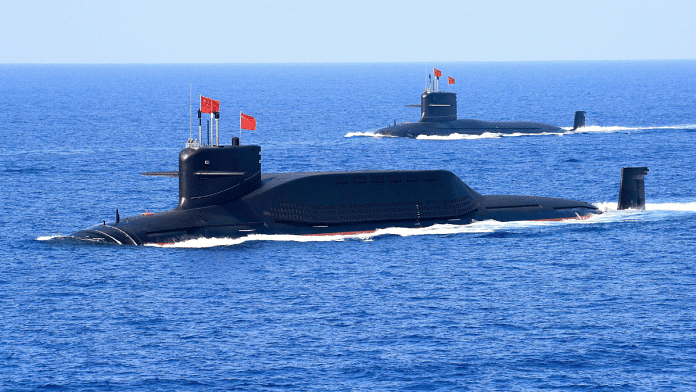New Delhi: China has hiked its national defence budget for 2025 by 7.2 percent in line with its push for military modernisation. The budget, totalling 1.78 trillion yuan ($245 billion), was revealed at the third session of the 14th National People’s Congress Wednesday.
Despite an economic growth target of approximately 5 percent for the year, China’s military spending continues to outpace economic expansion. This marks the third consecutive year of a hike of 7.2 percent, following a 7.1 percent rise in 2022 and 6.8 percent in 2021, according to CNBC.
Under President Xi Jinping’s leadership, the defence budget has more than doubled from 720 billion yuan in 2013 as China has been investing heavily in advanced military capabilities, including missiles, ships, submarines and surveillance technology. China also has the world’s largest navy, a key advantage in regional power projection. Xi’s goal is to achieve full military modernisation by 2035.
The defence report emphasises combat readiness and scientific advancements, while addressing political integrity within the People’s Liberation Army (PLA), following corruption scandals that led to the expulsion of two former defence ministers and a Central Military Commission member from the Chinese Communist Party.
China’s military strategy focuses on asserting its territorial claims, particularly in the Taiwan Strait and the South China Sea. The PLA has increased its military drills, including an unprecedented live-fire naval exercise in the Tasman Sea in February, prompting commercial flight diversions. Taiwan has also reported increased Chinese military incursions, with Beijing maintaining pressure with frequent aircraft missions.
Meanwhile, Taiwan has announced plans to boost its own military budget in response to the growing threats, strengthening its defence capabilities with advanced US F-16s, missiles and domestically produced armaments.
Taiwanese security analysts note that China’s military build-up is aimed at countering US influence in Asia, according to Taipei Times. The US, which remains the world’s top defence spender with a proposed 2025 military budget of $850 billion, has bolstered Taiwan’s defences with upgraded F-16s, missiles and tanks.
“Beijing is trying to make acceptance of China as the relatively more predictable superpower easy as possible for others,” Sung Wen-ti, a non-resident fellow at the Atlantic Council, told Taipei Times.
In response, Chinese Premier Li Qiang reiterated Beijing’s stance against Taiwan’s independence while advocating for peaceful reunification.
According to the Pentagon, the headquarters of the US Department of Defense, and military analysts, China’s actual defence spending could be 40 percent higher than the reported figures due to hidden expenditures spread across other budgets. China has defended its military spending as necessary for maintaining stability, with officials stating that “peace needs to be safeguarded with strength”.
While Beijing has asserted that its defence budget remains below 1.5 percent of its GDP, significantly lower than the global average, its continued investment in high-tech weaponry signals its ambition to reshape regional power dynamics.
India has increased its defence budget by 9.5 percent for FY 2025-26, raising the total allocation to Rs 6.81 trillion ($78.7 billion). The focus remains on military modernisation, including advanced aircraft, drones and next-generation weaponry.
Border tensions with China in Ladakh and Arunachal Pradesh continue to shape India’s strategic outlook. It is enhancing indigenous defence production and strengthening alliances with global partners, including the US, Japan and Australia, to bolster its security posture in the region.
(Edited by Mannat Chugh)
Also Read: Persian Gulf to South China Sea, mapping India’s maritime diplomacy through naval deployments






